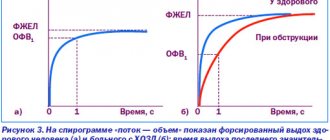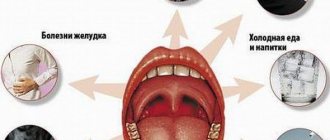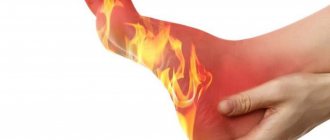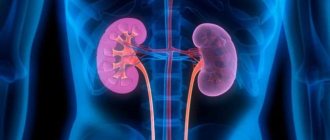It is located under the diaphragm, in the right hypochondrium, and consists of two surfaces and two edges:
- the upper, or, to be more precise, the anterosuperior surface;
- bottom surface;
- upper (superoposterior) edge;
- bottom edge.
There are two lobes in the liver: the larger right and smaller left, separated by the falciform ligament. The organ is covered with a serous membrane, under which there is a thinner fibrous membrane. The anterior part of the gland is adjacent to the peritoneum, the posterior surface is covered by the diaphragm. Its smallest structural component is the hepatic lobule, formed in the form of a prism with a size of no more than 2 mm. However, in the center the lobule contains a capillary and a vein.
Bile produced by the liver to break down fats flows down the ducts, accumulating for a short time in the gallbladder, after which it is poured into the duodenum. In addition, bile is necessary for normal intestinal motility.
As of 2020, more than 200 million patients with liver disorders were registered in the world, and these diseases are among the top ten most popular causes of death. Often the chronic stages of the disease end in cirrhosis. Liver cancer is diagnosed quite rarely; oncological tumors of other organs metastasize to the liver much more often.
Symptoms of liver disease
According to statistics, most often men turn to doctors with liver complaints. A person can detect symptoms either independently or by contacting a specialist. Classic signs indicating liver disorders:
- unpleasant taste in the mouth;
- asthenia, fatigue, irritability;
- pain in the abdominal cavity on the right;
- yellowing of the sclera of the eye, tongue, skin;
- formation of star-like bruises on the skin;
- nosebleeds;
- changes in the color of stool and urine;
- nausea, vomiting, flatulence, problems with stool;
- swelling of the limbs.
It is often said that the liver suffers in silence. It has no pain receptors. But with disruption of its functioning and increase in volume, the organ stretches the enveloping capsule and puts pressure on neighboring structures, which causes discomfort.
Jaundice is associated with a disorder of bile formation and an increase in the level of bilirubin in the blood. Hepatic diseases have a bad effect on the quality of blood clotting. This entails the formation of bruises, hematomas, and bleeding. Liver dysfunction also affects the gastrointestinal tract.
Important! Pain will not immediately notify you of a problem, because there are no pain receptors in the organ.
Diseases of organs working in conjunction with the liver will become background signs of disorders. The specialist will identify additional symptoms:
- dysfunction of the gallbladder (Courvoisier's symptom - palpation reveals an enlarged gallbladder);
- disruption of the gastrointestinal tract;
- pressing on the lower corner of the right shoulder blade causes discomfort;
- Pasternatsky's symptom (pain occurs when the lumbar region is tapped).
Important! The liver is patient. It does not give warning “alarm bells”. Symptoms appear only in advanced cases.
Symptoms
Many patients are concerned about how to identify liver disease before irreversible consequences develop. Doctors identify the first symptoms of liver problems: general weakness of the body, bitterness in the mouth (especially in the morning), a feeling of heaviness or fullness on the right side under the ribs. The last sign indicates that the size of the organ has increased. Over time, more alarming signs of the disease appear - a constant bitter taste in the mouth, a burning sensation in the chest, nausea, and vomiting. In some patients, the skin and visible mucous membranes turn yellow, the color of stool changes, allergies and itching occur. Some syndromes are manifested by damage to the nervous system; they can be identified by the patient’s increased irritability.
Heaviness on the right under the ribs is an early sign of gland disease
Signs of a diseased liver depending on the disease:
- Steatosis is manifested by discomfort and a feeling of heaviness in the right side. Often the disease has a hidden course, then damage to the gland can only be detected during an ultrasound examination.
- Typical manifestations of hepatitis: lack of appetite, disorders of the digestive organs. If such symptoms occur, a biochemical blood test should be performed, which will show an increase in the concentration of ALAT and ASAT (liver enzymes). An increase in this indicator indicates the destruction of liver cells due to the inflammatory process.
- Cirrhosis can be determined by the following signs: increased fatigue, lack of appetite, nausea, vomiting, excessive gas formation in the intestines, diarrhea.
- Gland cancer manifests itself with the most severe symptoms. There are the following signs of an oncological process: increased abdominal circumference, nasal bleeding, anemia, swelling, fever (temperature rises from 37.5 to 39°). Up to a certain point there is no pain. Painful, aching sensations occur after prolonged walking or lifting heavy objects.
It is important not to miss the first signs of gland disease and visit a doctor.
Causes of liver diseases
The liver is similar in structure to a sponge. This structure allows filtering and purification of blood from toxic substances. The accumulation of harmful elements is the main factor in liver disorders. The causes of liver disease are classified as so-called. diseases of civilization:
- uncontrolled use of medications;
- poor quality food and water;
- poor nutrition;
- overweight;
- viruses;
- wrong lifestyle;
- liver injuries (chemical, physical, etc.).
25-35% is the number of people who go to the doctor with liver complaints due to alcohol consumption. The human body perceives alcohol as poison. Once inside, alcohol through a series of intermediate stops (stomach, intestines) with the bloodstream undergoes detoxification and purification through the liver.
An overdose of alcoholic beverages causes liver disease. If they are consumed excessively, liver cells (hepatocytes) die.
Important! An adult man can drink no more than 24 g of alcohol per day (60 ml of vodka, 90 ml of wine, 240 ml of beer). This figure is half as much for women.
Liver diseases: symptoms and signs
The most characteristic symptom of the disease is jaundice. With it, the level of bilirubin increases, the skin, mucous membranes and whites of the eyes become yellow. In persons of non-white races, only the yellow color of the whites of the eyes can be seen. However, not all jaundice is associated with improper liver function. There are prehepatic jaundice, hepatic jaundice and subhepatic jaundice, of which only hepatocellular jaundice is caused by deterioration of liver function.
Prehepatic jaundice is provoked by increased hemolysis, i.e. the breakdown of red blood cells, followed by an increased supply of bilirubin, the metabolism of which even a healthy liver cannot cope with. This situation can occur as a result of many bacterial infections (streptococci, enterococci, Staphylococcus aureus), parasites (malaria), tumors, serious damage to the body and so-called. mechanical hemolysis, when red blood cells begin to disintegrate due to repeated impacts in the tissues (this is observed, for example, in marathon runners, in whom hemolysis occurs in the soles of the feet due to repeated impacts on the ground while running).
Subhepatic jaundice occurs when the liver is working correctly, but bile and the bilirubin it contains are not excreted into the gastrointestinal tract due to blockage of the bile ducts. The cause may be stones in the gall bladder, tumors compressing the bile ducts, etc. With hepatic cell jaundice, which is a symptom of liver dysfunction, extensive diagnostics are usually necessary to determine the cause and prescribe therapy. However, one cannot simplify all the symptoms of liver disease only to jaundice, which appears when the dysfunction is quite serious. There are other symptoms of liver disease.
Liver diseases will provoke general problems with the digestion of food and the functioning of the gastrointestinal tract. Cholelithiasis, chronic dyspepsia, bloating, epigastric pain, irritable bowel syndrome and intolerance to fatty foods and alcohol may appear.
There will also be unnoticed problems with digestion, the consequences of which will appear after some time. The liver is involved in many biochemical reactions in which nutrients (vitamins, fats, carbohydrates, proteins) are converted into simpler forms that are easily absorbed by the body. Due to liver dysfunction, these substances will not be absorbed, which can further lead to the development of symptoms of malnutrition - vitamin deficiency, weight loss, weakness, rapid fatigue, etc.
Neurological symptoms of fasting associated with insufficient nutrition of the brain may also appear - poor concentration, lack of energy, depression, poor memory, headaches, etc. The activity of the central nervous system can also be disrupted by the toxic effect of substances not processed by the liver. The syndrome of such disorders is called hepatic encephalopathy. It may be characterized by other symptoms besides those described above, for example, sleep disturbances, disturbances of orientation and feelings, asterixis - i.e. large trembling of the hands, with a frequency of several uncontrolled movements per minute (it can be noticed if you stretch your arms in front of you).
The last stage is hepatic coma.
Other characteristic symptoms of liver disease associated with the accumulation of toxins are the characteristic brown liver spots on the skin, foetor hepaticus (foetor hepaticus), itchy skin and the appearance of itchy hives. Fat metabolism may be disrupted. As a result, in a lipid profile (a study of the level of fat and cholesterol in the blood), cholesterol - HDL - will be reduced, and “bad” cholesterol - LDL - and triglycerides that are harmful to health will be increased. This disorder can accelerate the development of atherosclerosis.
A diseased liver will also disrupt the balance of sugar levels and insulin production in the body. Over time, insulin resistance and type 2 diabetes may develop due to severe fluctuations in sugar levels. The liver also reacts to the levels of hormones in the body by destroying them.
With liver disease, the level of sex hormones (testosterone and estrogen) and thyroid hormones may increase. Therefore, premenstrual syndrome may appear, women may have a more difficult time going through menopause, and men may have an increased risk of heart attack.
The liver is also an important element of the immune system. Her disease can lead not only to frequent and more difficult infections, but also to an increased risk of autoimmune diseases, exacerbation of existing allergies, especially as a response to toxins that the liver processes in a normal situation.
Which doctor treats
A specialist hepatologist deals with the liver. What methods does he use to diagnose diseases?
Polyhepatography detects liver disorders in a timely manner and makes it possible to assess the state of metabolism in the organ. This method allows you to compare the results of other studies:
- ultrasonic;
- computer;
- magnetic resonance imaging;
- blood test for alpha-fetoprotein.
Hepatologists collaborate with gastroenterologists, surgeons, and therapists on issues of liver dysfunction. If we are talking about hepatitis, then infectious disease specialists are involved in treatment.
Hepatitis
Diseases in which viruses multiply exclusively in liver cells (hepatocytes) are called viral hepatitis. Causes inflammation of the organ. Classic symptoms:
- temperature increase;
- dark stool;
- light urine;
- jaundice.
Hepatitis A (Botkin's disease) belongs to the category of “dirty hands” diseases, that is, it is of a contact nature. It occurs when an organ is infected, occurs in an anicteric form, without consequences, and ends quickly. There are no subjective symptoms; they are revealed only during examination. In adulthood it is difficult to tolerate.
Important! A person is able to independently develop immunity against hepatitis A after having had it once.
Hepatitis B is transmitted through blood. The disease drags on for a long time and leads to serious consequences (cirrhosis, cancer). It is easier in adults than in children. There is a greater chance of becoming infected with this type of hepatitis due to the low infectious dose required to initiate the disease. It is transmitted through household and sexual contact. One carrier of the virus infects the entire family within a year.
Important! A third of the world's population is a carrier of the hepatitis B virus.
Hepatitis C is transmitted, just like hepatitis B, through blood and sexual contact. The infectious dose is higher than that of hepatitis B, that is, it is more difficult to get sick with it. The disease proceeds latently, suddenly manifesting itself with severe complications. Leads to fibrosis, cirrhosis and liver cancer. The percentage of patients is lower. It has the character of a chronic infection.
Important! It is not transmitted by contact: through kisses, handshakes, hugs, etc.
Hepatitis E is a more severe variant of hepatitis A. It develops against the background of a lack of hygienic conditions and violations of sanitary standards. The disease requires an increased infectious dose.
Important! Hepatitis E is common in Southeast Asia.
Hepatitis D develops only against the background of hepatitis B. The malignant form of the disease is most likely fatal.
Major diseases
They are classified according to the type of damage to the organ structure. Diseases of the biliary tract and gallbladder are another type of disease. The list includes the most common diagnoses. Each diagnosis requires serious treatment. Types of damage:
- hereditary and genetic diseases, congenital defects;
- structural and functional changes;
- autoimmune diseases;
- pathologies with concomitant diseases of other organs;
- functional, primary inflammatory, purulent lesion;
- injuries;
- neoplasms;
- parasite damage;
- vascular damage.
Infectious liver lesions
Viral hepatitis A, B, C are liver diseases that are most often diagnosed. The types of viruses determine the nature of the disease. The carrier of the virus is the source of the disease. The virus accumulates in red blood cells, then becomes fixed in the intestine, on the membrane. This is followed by viral damage to the organ. Liver infections are caused by fungi, bacteria, parasites, and microbes.
| Name | A (Botkin's disease) | IN | WITH |
| Method of infection | Fecal-oral route. Through food, water, and poor hygiene. Often diagnosed in children. | Through damage to the skin, sexual contact, or contact of mucous membranes. | Through common hygiene items, through blood (transfusion, tattooing, etc.), drug use, unprotected sex. |
| Common symptoms of liver disease | Nausea and vomiting, brown urine, abdominal pain, fever, fatigue, muscle pain | Itching of the skin, darkening of the urine, aversion to food, nausea, heaviness in the liver area, enlargement of the organ, dry mouth. | There are practically no symptoms in the early stages. In case of acute infection: yellowing of the skin, headache, lack of appetite, joint pain, enlarged liver, yellowing of the skin, and sometimes the whites of the eyes. |
| Incubation period | 1 week – 1.5 months | 1.5 – 6 months | From 14 to 60 days |
| How to treat? | Bed rest, table No. 5, drug treatment. | Bed rest, detoxification, drug therapy, diet. | Hepatitis C is treated only under the supervision of a doctor. |
| Specifics of the disease | After an illness, the body develops immunity. | Complication: hepatitis B in the chronic stage leads to cirrhosis. | In 20% of cases in children and 90% in adults, the acute stage develops into chronic hepatitis. Diagnosis in the early stages is difficult. |
Toxic lesions
An overdose of vitamin A provokes organ intoxication.
The affected liver reacts to intoxication in different ways: it accumulates fat or bile, and cell necrosis is possible. Chronic, severe liver damage is usually asymptomatic for the first few months. Over time, blood clotting deteriorates, jaundice appears, and cirrhosis appears. The chronic course is caused by an overdose of vitamin A, long-term use of ethanol, methotrexate or amiodarone. Acute toxic damage is manifested by jaundice, impaired hemostasis, and fever. A characteristic disease is parenchymal inflammation of the liver. Parenchymal hepatitis is also a complication after viral hepatitis.
Toxic substances enter the body through the skin, respiratory system, food and drink. The incidence is high among people over 40 years old, when working in industrial zones, workers in hazardous industries often get sick, the pathology manifests itself in obesity. Depending on the stage of the disease, both conservative treatment and surgical intervention are possible.
Neoplasms
The most common signs of liver problems in the presence of tumors: weight loss, jaundice, nausea, ascites. For detection, liver tests, ultrasound, and biopsy are prescribed. Benign tumors occur without noticeable symptoms, grow slowly, and complaints about health are quite rare. The most common liver adenomas are hemangiomas and cysts. Some of them are fraught with rupture of the tumor and twisting of the leg. Malignant neoplasms are often the result of cancer in another organ. Existing cancer diseases have the following names:
- The tumor in children is called hepatoblastoma.
- Angiosarcoma (source - vascular endothelium).
- Cholangiocarcinoma (from epithelial cells of the bile ducts).
- Hepatocellular carcinoma is a primary cancer that originates in the cells of the liver parenchyma.
Most often, neoplasms are a consequence of hepatitis types B and C. Symptoms: subfernal temperature, weight loss, heaviness in the liver area. Time is not on the patient’s side: late diagnosis leads to death within 1 year. Life expectancy after cancer removal is on average about 3 years, up to 5 years - about 20%. These are statistics, so you need to remember that each person is individual and has his own body reserves. Psychosomatics has an impact on fatal diseases.
Exchange disorders
Junk food can trigger hepatosis.
Liver cells are sensitive to any metabolic disturbances, because it is in them that the main fat metabolism is ensured. If this happens, organ obesity, or hepatosis, develops. The causes are poor nutrition, alcoholism, and diabetes. Initially, fatty substances accumulate in cells, and the body experiences an excess of free radicals and inflammation. The result of this process is necrosis of healthy tissue and its replacement with connective tissue. Often the disease is asymptomatic, sometimes there are signs of indigestion, nausea, bloating, fever, and bitterness in the mouth.
Cirrhosis
In this disease, liver cells, hepatocytes, die, leaving in their place useless connective tissue. This is the last stage of many liver lesions. Main reasons:
- alcohol;
- virus;
- fat lesion.
The main reason is alcohol abuse, which does not allow the liver to recover. The other half develops cirrhosis from advanced hepatitis. Against the background of classic symptoms, it appears in the later stages.
Liver tissue is destroyed. The organ shrinks, ceasing to process waste from the body.
Important! There are no reliable statistics on liver cirrhosis in Russia. Perhaps many more people die from it than doctors believe.
Cirrhosis of the liver
Cirrhosis is a liver disease in which irreversible processes of replacement of parenchymal tissue with connective fibrous tissue occur. The diseased organ is enlarged, with a dense structure and a rough surface. Unfortunately, with incorrect or absent treatment, cirrhosis of the liver has a chance of ending in death after 2-4 painful years. Therefore, when you notice the first symptoms, you should always consult a doctor.
Symptoms
Liver cirrhosis has the following symptoms:
- weakness, fatigue;
- increased body temperature;
- abdominal discomfort, pain;
- digestive disorders;
- lack of appetite and weight loss.
Kinds
Cirrhosis, depending on the causes, is divided into:
- alcoholic – appearing due to alcohol abuse;
- congestive – arising due to venous stagnation of blood and hypoxia of liver cells;
- viral – developing as a consequence of ignoring viral forms of hepatitis;
- primary biliary – appearing in a person due to a malfunction of the immune system.
Liver failure
Applies to any age. With this disease, the liver loses the functionality of its cells. Accompanied by encephalopathy (brain dysfunction). Doctors classify this disease according to the time during which it develops:
- hyperacute (7 days);
- acute (7-21 days);
- subacute (from 21 days to 26 weeks).
Every fifth visit to a specialist leaves the question about the pathogenesis and causes of the disease unanswered. Liver failure can lead to:
- injuries;
- drug lesions;
- chemical damage;
- viral hepatitis.
When faced with this pathology, the liver is affected completely, less often - in isolation. Leads to necrosis, steatosis, and inflammation of the organ.
Important! The disease is accompanied by emotional depression.
The most common pathologies
But the correct performance of these functions can be interfered with by various liver diseases, for example, cirrhosis, hemangiomas, cancer, various cysts and infectious diseases. The most common liver pathology today is cirrhosis, which is a chronic liver disease characterized by changes in the lobular structure due to an increase in the volume of connective tissue. This disease manifests itself in the form of functional failure, as well as high pressure syndrome in the portal vein. The main reason for the development of liver cirrhosis is alcoholism, viral hepatitis, and the presence of harmful organisms in the organ.
Symptoms and signs of liver disease do not differ much between men and women.
To treat this organ, liver cleansing is often used. In order for this organ to cleanse itself, you need to give up bad habits and reduce the load on the liver. For complete cleaning, you can consult a doctor. If liver therapy for some chronic ailments is no longer possible, then in modern medicine there is only one option to help the patient - liver transplantation.
The liver is very patient and is designed to serve throughout human life. However, it functions under heavy loads, and an unhealthy lifestyle and consumption of harmful foods in most cases lead to diseases of this organ.
Liver cancer
The disease is terrible because of the suddenness of its appearance. She is asymptomatic. Pain and discomfort in the upper abdomen appear even when the tumor has grown in size. Patients often end up in the hospital with cancer that is no longer operable.
There is a risk group that includes people with hepatitis B, C, and liver cirrhosis. By undergoing annual examinations, these people will be able to prevent the occurrence of cancer. And if it occurs, get rid of the disease surgically.
Important! Cancer can develop in the liver either initially or as a metastasis from a neighboring organ.
Liver cyst
A liver cyst is characterized by the presence of a fluid-filled cavity in the liver. Experts tend to see in this kind of cavities inside the organ bile ducts that have worked their way, but are not closed, growing along with the body.
Important! More often, women aged 40-50 years experience this disease.
There are no symptoms. Detected by ultrasound. The doctor refers the patient to a specialized clinic to clarify the question of the tumor nature of the cyst. Often it signals more serious illnesses.
The cyst is not inherited, but with the polycystic nature of the disease (formation of a large number of cavities), a tendency to the disease is passed on to children.
Important! A liver cyst never develops into cancer.
Cholangitis
The liver has passages that merge into ducts through which bile flows into the gallbladder. It is released at every meal and enters the intestines to dissolve the fats obtained from food.
The nature of the disease is autoimmune, that is, the body itself attacks the ducts, deforming them, inflaming them and causing disruption of the movement of bile. The fluid stagnates, leading to the death of liver tissue.
Symptoms include:
- pain in the right hypochondrium,
- general weakness,
- yellowing of the sclera of the eye and skin,
- change in color of stool and urine.
Important! With cholangitis, the bile ducts narrow and become sclerotic. This can lead to cirrhosis.
Manifestations of various liver diseases
Acute drug-induced hepatitis begins to appear 2-8 days after taking medications. Unpleasant symptoms occur after taking isoniazid, paracetomol, methyldopa, atenolol, rifampicin, niacin, ketoconazole.
Chronic drug-induced hepatitis is characterized by dull pain in the right side, decreased motor activity, enlarged liver, and moderate yellow color of the skin.
Acute viral hepatitis A manifests itself within 14-45 days after infection. It develops in the following sequence:
- Pre-icteric period. “Dull” pain in the joints, headache, poisoning of the body, increased body temperature, urge to nausea, vomiting, unstable stool, and an increase in the size of the liver begins to appear.
- Jaundice period. It is characterized by severe itching of the skin, an increase in the size of the liver and spleen, and sometimes nosebleeds and joint pain.
- Post-icteric period. It is characterized by hepatomegaly, restoration of the size of the liver, its functions, and normalization of the patient’s condition. The duration of this stage ranges from 1 to 6 months. With viral hepatitis E, infection most often occurs through dirty drinking water. This infection most often resolves on its own within 1.5 months. Its symptoms are the presence of jaundice, anorexia, increased sensitivity of the liver, abdominal pain and tenderness, nausea and vomiting, and fever.
In chronic viral hepatitis B, the following symptoms are observed:
- asthenovegetative syndrome, which manifests itself in lethargy and loss of strength; dyspepsia, severe nausea, vomiting, flatulence, bloating, unstable stool; pain in the right side;
- the presence of subicreticity (slight yellowness of the skin and eyeballs);
- hemorrhagic syndrome (rapid appearance of bruises, nosebleeds);
- parinal erythema, the presence of spider veins in half of the patients; an increase in the size of the liver and spleen.
During the course of a disease such as chronic viral hepatitis C, the patient exhibits practically no signs for a long time, but after 6 months they begin to increase and ultimately result in cirrhosis or carcinoma.
With chronic alcoholic hepatitis, the patient experiences lethargy, decreased appetite, and enlarged liver. It can manifest itself in two forms: progressive and persistent.
Speaking about the first form, small-focal liver damage occurs in the body, which subsequently turns into cirrhosis. It is accompanied by diarrhea and nausea, vomiting, fever, and bleeding.
In another variant, the disease proceeds in a fairly stable, calm form. By refusing to drink alcohol, the patient has a high chance of completely stopping the inflammatory processes. Symptoms may include heaviness in the right side, mild nausea, belching, and a feeling of fullness in the stomach. During liver steatosis (fatty hepatosis), a stable, non-progressive course is observed. The patient complains of nausea, heaviness and pain in the right side, which intensifies during physical activity.
Cirrhosis is characterized by the following symptoms:
- portal hypertension (“jellyfish head”), which is an overfilling of the veins of the abdominal wall;
- moderate increase in the size of the spleen;
- an increase in the size of the liver (mainly its left lobe);
- painful sensations in the abdomen
- dyspeptic disorders;
- increase in body temperature;
- joint pain;
- flatulence;
- asthenia.
A large number of symptoms that appear in the initial stages of each liver disease can easily be confused with manifestations of other diseases. In some cases, the symptoms of destruction that has just begun in the body may not be noticeable. Therefore, it is necessary to take into account the mandatory periodic inspections.
Hepatosis
Obesity of liver cells. A common problem among overweight people. Alcohol intoxication aggravates the course of the disease.
The metabolic process occurring in the organ is disrupted. Hepatocytes cease to perform their function and die, leaving behind connective tissue. Pathological changes occur at the cellular level, which leads to organ degradation:
- increase;
- loss of pigmentation;
- cyst formation.
The patient's complaints are associated with mild heaviness, gurgling in the intestinal area, flatulence and slight loosening of the stool. After a biochemical blood test and ultrasound examination, the specialist more accurately determines the degree of liver fibrosis. And fibrogatsroscopy is performed to exclude esophageal varicose veins from the list of causes of the disease.
Important! Missing the disease will lead to death.
Treatment of liver diseases
“There are no healthy people, only under-examined ones.” This saying applies to people with liver diseases. Hiding behind the absence of symptoms, organ disorders often have to be treated in later stages.
Medication
Traditionally, when treating all liver ailments, specialists use hepatoprotector drugs. They are divided by origin:
- vegetable (silymarin, allohol, karsil);
- animals (sirepar, hepatosan);
- synthetic (ACC, ursodeoxycholic acid);
- amino acids (methionine, ademetionine, ornithine);
- phospholipids (essentiale, phosphogliv, essential);
- vitamins (B, E, lipoic acid).
When developing these medicines, doctors adhere to the principles of preserving the natural base, reducing impurities, flavorings, stabilizers and emulsifiers. The drugs restore liver cells, normalize lipid metabolism, and reduce cholesterol levels.
Important! If, instead of drug treatment, you decide to turn to dietary supplements (BAS), remember that they do not always have the stated effect. Rely on your doctor's recommendations.
We especially note the following diseases.
Cancer
To combat liver cancer, a group of “targeted” drugs have been developed that have minimal side effects.
Contacting centers for early diagnosis of tumors allows you to minimize surgical intervention. The destruction of small tumor nodes (up to 3 cm) with high-frequency electricity is carried out without surgery. Cancer is a protein formation that will literally be cooked during this procedure. After which the body itself gets rid of the remnants of the malignant tumor.
With transarterial chemoembolization, the tumor is deprived of its blood supply. Through the liver artery, a drug containing an embolus is injected into the vessel supplying the tumor. This tactic minimizes the spread of cancer.
Hepatitis
The success of hepatitis treatment depends on the person’s genotype (I-50%, II and III-80%). The patient is undergoing drug therapy. He is prescribed the drugs interferon (a protein to fight the virus) and riboverine (which enhances the effect of interferon). Antibiotics (neomycin, vancomycin) are used in combination.
Therapy continues for 24 weeks. There are side effects (depression, sleep disturbances, appetite). They are temporary and end with treatment.
Cirrhosis
In advanced cases, a radical method is used - organ transplantation. A new technique is being developed - treatment with stem cells that will replace dead liver tissue.
Cyst
A cyst measuring 4-5 cm does not require surgery. From 5 cm, the cyst must be removed surgically. Drainage is in progress. There is no drug treatment.
Cholangitis
Inflammation of the bile ducts in the liver requires surgical intervention. Endoscopic expansion of the channels occurs to ensure uninterrupted flow of bile.
Hepatosis
In this case, the doctor prescribes a mandatory diet that excludes:
- alcohol;
- coffee;
- carbonated drinks;
- fatty foods;
- fast carbohydrates (bread, sweets);
- spicy and salty foods.
The patient's menu includes dietary meat, bran, vegetables, fruits, cereals, seafood, and delicate dairy products. Therapy is carried out in combination with hepatoprotectors.
Treatment at home
A person is able to independently approach liver treatment. In such cases, we often hear the phrase “liver cleanse.” As you work on this, remember that you are dealing with a capricious organ. What you can do to please him:
- balanced protein diet;
- consumption of vitamins;
- reducing the load on the organ (reducing fatty foods and alcohol).
One of the common detoxification programs involves purchasing and taking “Allohol” herbal tablets. Every day for 10 days, take 1-6 tablets in the morning, at lunch and in the evening before or after meals. Increase the dose of the medicine from 1 to 7, so that on average you take a course of 24 tablets per day. The therapy opens the bile ducts, facilitating liver function.
Important! "Allohol" lowers blood pressure. Stock up on a blood pressure monitor and a cup of coffee.
Cleansing with oils is also aimed at unloading the liver of toxins. This procedure is carried out at any age all year round. This is a long process that creates conditions for self-cleansing of the liver. All you need is vegetable oil. In the morning, rinse your mouth and take a small amount of oil (5 g) orally. Add the oil to your food or consume it separately before each meal. Oil enemas are used. Such a diet will lead to a choleretic effect, which will have a beneficial effect on the liver.
Liver cleansing is effective in combination with gastrointestinal lavage. Use both harsh methods (enemas) and more gentle ones (1 tablespoon of magnesia per glass of boiled water, diluted with the juice of one lemon).
Important! Carry out cleansing under the supervision of a doctor. There is a risk of disrupting the functioning of liver-related systems: gallbladder, intestines, kidneys.
Treatment with folk remedies
Drug therapy for the liver leads to side effects. This fact creates a tendency for hepatitis patients to turn to folk remedies for help.
Exercises
The vagaries of the liver can be calmed by exercise. There is a breathing system aimed at enriching the organ with oxygen. In addition, with this approach it is massaged. So, when breathing diaphragmatically, a person concentrates not on expanding the chest, but on the navel. Make sure your stomach rises as you inhale. Help with your hands, applying reasonable pressure to the liver area and making glancing blows. It is best to perform the exercise while lying on your back.
Important! If there are stones in the bile duct, exercises of this kind are contraindicated.
Products
Persimmon is actively used in the treatment of the liver. Thanks to the fiber and sugars it contains, the organ is protected from toxic overload. The coarse fibers of the berry remove toxic substances from the body.
Dereza vulgaris or goji berry removes excess fat from liver cells.
The complex of active flavonoid substances contained in buckwheat prevents blood vessels and liver cells from being destroyed. Therefore, products based on it help against cirrhosis and fibrosis.
Herbs
The following herbs have a beneficial effect on the organ:
- immortelle;
- agrimony;
- chicory;
- yarrow;
- arnica;
- horsetail;
- sage.
Drink infusions of these herbs. Brew like tea. Drink a third of a glass three times a day for a month. The collection has a preventive effect against cholelithiasis, cirrhosis and hepatitis.
Liver functions
As already mentioned, the liver has many functions:
- Neutralizes foreign substances by converting them into harmless or less harmful ones, which are easily eliminated from the body.
- Neutralizes metabolic end products and removes excess vitamins, hormones, etc. from the body.
- Provides the body with glucose, which occurs through the synthesis of energy sources.
- Restores the reserve and storage of some useful substances.
- Forms cholesterol and its esters.
- Synthesizes bilirubin and bile acids.
- Synthesizes hormones and enzymes that are involved in digestion in the small intestine.
- Serves as a storage place for blood, which, if necessary, for example, during blood loss, is released into the general vascular bed.
Prevention
Regular visits to your doctor can help prevent liver disease. Even if an organ does not hurt, this does not mean that it is healthy. An annual visit to a specialist will identify diseases in the early stages, which will facilitate their subsequent treatment.
Doctors advise taking hepatoprotectors. They are good in both treatment and prevention. Resolute remains a popular drug. It will protect against alcohol damage and lower cholesterol.
Liver health begins with streamlining your lifestyle and diet. A person can reduce the load on the liver in the following ways:
- lose weight;
- reduce fatty foods and alcohol;
- fight a sedentary lifestyle;
- limit uncontrolled use of medications;
- beware of viruses;
- as you age, see a specialist;
- donate blood for biochemical analysis.
Take care of strengthening your immune system: get vaccinated against hepatitis A and B viruses. Get comprehensive vaccinations. At the birth of a child, experts suggest vaccination in the maternity hospital.











